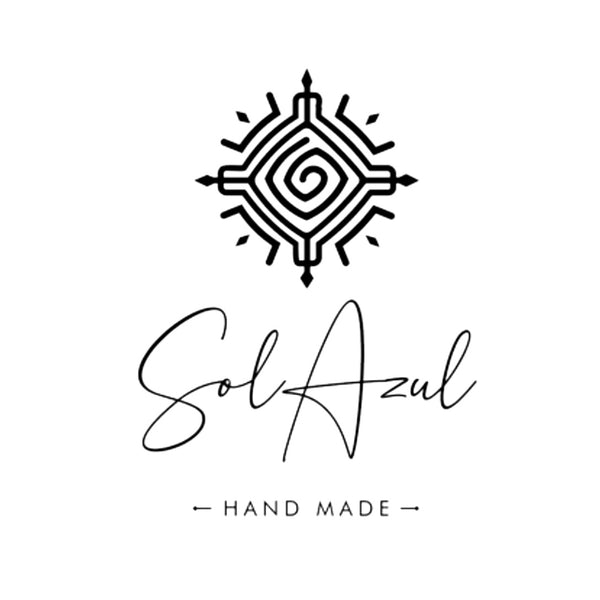About Us
Two important Colombian indigenous communities are the creative source of SolAzul: The Wayuu in La Guajira and Los Arhuacos in the Sierra Nevada de Santa Marta.
THE WAYUU
The Wayuu people are an indigenous Latin American community populating the visually eye-catching desert of the Colombian La Guajira Peninsula in the borders with Venezuela.
They lives in small settlements called "Rancherias" which consist of five or six houses each, where the Wayuu people are able to preserve a way of life that has been passed down through the generations and remains unscathed by modern culture.
Organized in matrilineal clans, the Wayuu children carry their mother's last name, making the Wayuu women not just the center of the family but cultural leaders of the community. One of the most significant aspects of their culture is the art of weaving Wayuu bags.

Each Wayuu mother teaches her daughter how to weave and crochet, keeping the tradition as alive and vibrant as ever. To the Wayuu, weaving is a symbol of wisdom, intelligence, and creativity. As young Wayuu women come of age, they learn to create the Wayuu bags. According to the legend, the tradition comes from "Wale´kerü", a spider that taught the women how to weave their creative drawings into the bags. Each design is unique to the weaver, telling a story through the bag's colors, patterns, and shapes. These ancestral patterns are called "Kanaso'u" and are the maximal expression of the way Wayuu people understand the habitat they live.

The weaver takes careful precision in her storytelling, making sure that the bag is a strong representation of Wayuu culture. Wayuu women work full days while weaving their bags. It could take up to a two months to complete one single bag. Today, the bags has become the base of their economy, enable them to preserve their way of life.

La Primera in Riohacha, Colombia is the iconic market of the Wayuu bags.

THE ARHUACO
The Arhuaco indigenous community lives on the western slope of the Sierra Nevada de Santa Marta, in the San Sebastián de Rábago region, and the banks of the Sevilla, Aracataca, and Fundación rivers. Some of them migrated and settled at the east of the Donachui and Templado rivers.
They live dispersed on their farms. There are around 3,500 Arhuaco indigenous people, and their language belongs to the Chibcha linguistic family.

From the Arhuaco point of view when you think of the Sierra Nevada you think of life. Their attributes and spaces symbolize each organ and system vital in their bodies. This is how the rivers provide the necessary and vital resource of water and represent the veins of your body, the trees and their fruits guarantee the daily chores and in turn represent the mountains, the men, the snow-capped mountains and the sacred places in where the spirits of fathers and mothers rest, the subsoil represents the bones of the earth, necessary to maintain the spirit of balance.
There is no element found in the body that is not in the earth.

The backpacks are woven only by indigenous Arhuacas women since making bags is considered an entirely female trade. The process consists of obtaining the sheep's wool, selecting it, washing it, drying it, spinning it (making a thread using a spindle), corking it (making a double thread), and then knitting the natural beige unicolor backpack. Once the bag is finished, it can be decorated with rhinestones, embroidered with traditional designs, or left in its natural state. The entire process is handmade. The weaving of the backpack takes about three weeks, and the rhinestone process takes about one week. We use Czech rhinestones.
To talk about weaving, we have to refer to almost every moment of Arhuaco's life. Each backpack has a special meaning; for the Arhuaca culture, the bag represents the woman's womb and is one of the sacred symbols, it is the materialization of the thoughts of its creator, and all are connected with mother earth.

